On Monday, we published our review of the Pixel, the first smartphone designed entirely by Google. We like it. A lot. One of the main reasons it received a high score was the camera, which is easily the best Google has put into any smartphones, including last year’s Nexus 6P.
But just how good is it? Short answer: very. The Pixel’s 12.3 MP camera comes with an aperture of f/2.0, 1.55µm pixel size, phase and laser detection autofocus and dual LED flash. There is no hardware optical image stabilization, but Google was clever in choosing to tie the camera sensor to the phone’s gyroscope, which effectively offers the same thing as traditional OIS. The setup is capable of delivering photos that are crisp, with excellent detail, good colors and high dynamic range. It also handles low light as well as any camera I’ve tested this year.
All of this means nothing without some visual evidence, though, so in order to get a sense of the quality of the Pixel’s cameras we’re going to look at photos in three lighting conditions, which I have boringly named Good, Moderate and Poor. Good is obvious, lighting is plentiful and thus the camera should not struggle to offering crisp images with fantastic detail, colors, etc. Moderate would be, if we correlate it to a time of day, around dusk when natural lighting is limited, but not completely gone or you have a decent amount of artificial lighting. Low is also pretty obvious, the sun has set and the camera is relying on sparse artificial lighting.
All of the photos are unedited, save for cropping for formatting purposes. Images taken with phones other than the Pixel have been marked as such. Also, to keep the article from getting over encumbered, we’re focusing solely on still photography here. For a good look at how the Pixel camera handles video, check out this video from prominent tech YouTuber MKBHD.
Let’s dive in!
 We start with ideal conditions, the kind of circumstances that should lead to a good photo no matter the level and price range of phone you’re using. Here the Pixel excels, as well it should.
We start with ideal conditions, the kind of circumstances that should lead to a good photo no matter the level and price range of phone you’re using. Here the Pixel excels, as well it should.
The cat (his name is Rogelio) and the blanket are in tack sharp focus, colors are vibrant and the level of detail is great. Enlarge the photo (below) and you see just how good detail is. Even zoomed in on Rogelio’s face, you still get a good amount of defined texture around his nose and in the fur of his face. You can crop this photo in several ways, depending on what exactly you want in the frame, without any degradation of quality. Exactly what you need into today’s social media-driven world.
 The one thing I would love the Pixel to have, particularly with a photo like this, is some sort of Portrait mode like the iPhone 7 sports. If there was the ability to blur the background and generate a nice bokeh effect, it would help highlight Rogelio even more than he already is.
The one thing I would love the Pixel to have, particularly with a photo like this, is some sort of Portrait mode like the iPhone 7 sports. If there was the ability to blur the background and generate a nice bokeh effect, it would help highlight Rogelio even more than he already is.
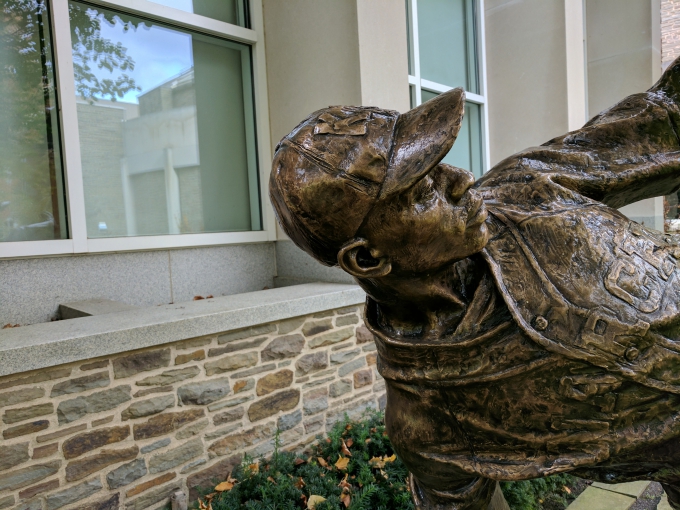 Here’s another example.
Here’s another example.
You can see in the reflection of the window (upper left corner) that this photo was taken on a sunny day with minimal clouds. It’s not as bright as the cat photo above because the statue sits in a garden area and its shadowed by the building. Rogelio, by contrast, was in a room flooded with natural light from every direction. Thus, the statue photo (it’s Satchel Paige for you non-baseball fans) has richer colors due to not being as washed out by light.
I love the color captured here. Both the statue, which is bronze, and the shrubs behind, are deep and vivid. Perhaps not as lifelike as you may find on a camera like the iPhone 7, but I am firmly in the camp of preferring more vivid photos over realism. I want the photos I take with my phone to look incredible, if that means them being slightly less than realistic, I’m okay with that. And nothing about the colors here look absurd, like the statue couldn’t possibly be that rich of a golden-brown color.
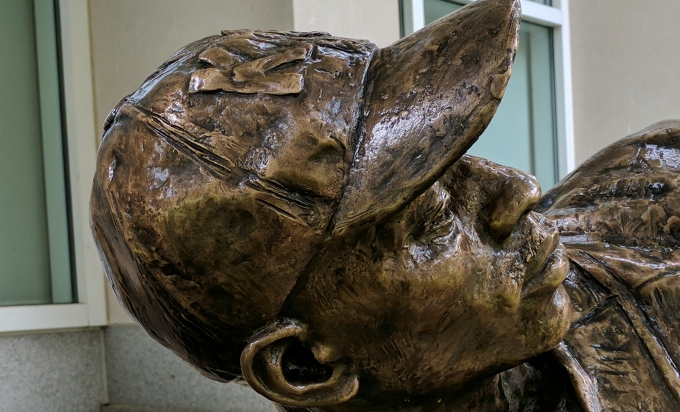 This is also a great example of the detail the Pixel is able to capture. The statue has a wealth of texture, and the camera gets all of it. Zoom in on Satchel’s face, and you can see the numerous bumps and notches that make up his features.
This is also a great example of the detail the Pixel is able to capture. The statue has a wealth of texture, and the camera gets all of it. Zoom in on Satchel’s face, and you can see the numerous bumps and notches that make up his features.
 For comparison’s sake, here’s a photo from the Note 7 in similar conditions. As you can see, the Note 7 is also capable of taking exceptional photos in good lighting. It’s hard to do a direct comparison, given that the samples are not of the same subject on the same day, but with what we have to work with I’d peg the Pixel camera just slightly less impressive when it comes to capturing detail when compared to the Note, but it is definitely in the same ballpark.
For comparison’s sake, here’s a photo from the Note 7 in similar conditions. As you can see, the Note 7 is also capable of taking exceptional photos in good lighting. It’s hard to do a direct comparison, given that the samples are not of the same subject on the same day, but with what we have to work with I’d peg the Pixel camera just slightly less impressive when it comes to capturing detail when compared to the Note, but it is definitely in the same ballpark.
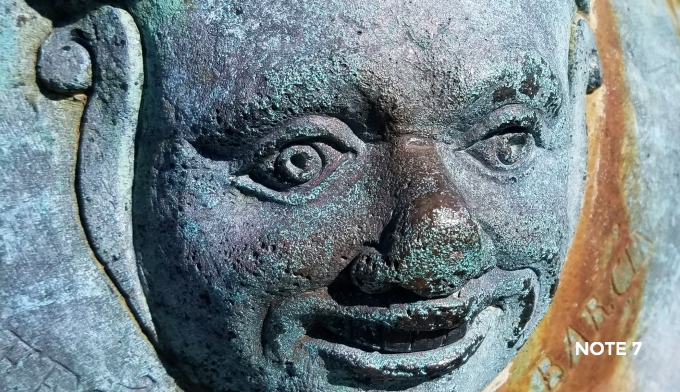 Zooming in on the, somewhat terrifying, figure here (it’s an ordainment on the rear of a cannon), you can see just how much detail the Note 7 gathered. But, if we’re being fair, the Note photo was taken far closer to the subject than either the statue or cat image from the Pixel, thus it’s not surprising the former was able to gather more minute details. Mostly, it’s splitting hairs. All three pictures are phenomenal and I’d be hard pressed to say anyone would be unhappy with what the Pixel offers.
Zooming in on the, somewhat terrifying, figure here (it’s an ordainment on the rear of a cannon), you can see just how much detail the Note 7 gathered. But, if we’re being fair, the Note photo was taken far closer to the subject than either the statue or cat image from the Pixel, thus it’s not surprising the former was able to gather more minute details. Mostly, it’s splitting hairs. All three pictures are phenomenal and I’d be hard pressed to say anyone would be unhappy with what the Pixel offers.
Next, let’s take a look at how Google’s camera does in moderate lighting conditions. Here, I’m going to be looking again at detail, but also how the dynamic range of the camera fares.
 The above photo isn’t quite at dusk, it’s actually taken in the middle of the day, but the overcast sky gives a good test for dynamic range. Often a picture like this is hard to capture well, and I’ve seen many cameras struggle in this circumstance. Generally, the cloudy sky will be blown out in order to properly expose the subject.
The above photo isn’t quite at dusk, it’s actually taken in the middle of the day, but the overcast sky gives a good test for dynamic range. Often a picture like this is hard to capture well, and I’ve seen many cameras struggle in this circumstance. Generally, the cloudy sky will be blown out in order to properly expose the subject.
 Take a look at the photos to the left, which come from the Moto Z in similar conditions. One is without HDR enabled, and you can see how overexposed the sky is. With HDR enabled, the detail of the sky comes back into the image, but you lose a lot of the detail on the statue.
Take a look at the photos to the left, which come from the Moto Z in similar conditions. One is without HDR enabled, and you can see how overexposed the sky is. With HDR enabled, the detail of the sky comes back into the image, but you lose a lot of the detail on the statue.
 Compare that with the image from the Pixel, and you can tell how much better the dynamic range is with Google’s handset. The archway retains a good amount of detail, even on the underside where there’s little light exposure (there is some noticeable noise here, however), and the clouds are still well exposed, losing little detail. The best benefit regarding dynamic range on the Pixel is that you can (and should) always have HDR+ enabled (it’s set to auto by default), because it doesn’t affect the speed of the camera one iota. Image capture is instant even with HDR+ enabled and it greatly improves the quality of the image.
Compare that with the image from the Pixel, and you can tell how much better the dynamic range is with Google’s handset. The archway retains a good amount of detail, even on the underside where there’s little light exposure (there is some noticeable noise here, however), and the clouds are still well exposed, losing little detail. The best benefit regarding dynamic range on the Pixel is that you can (and should) always have HDR+ enabled (it’s set to auto by default), because it doesn’t affect the speed of the camera one iota. Image capture is instant even with HDR+ enabled and it greatly improves the quality of the image.
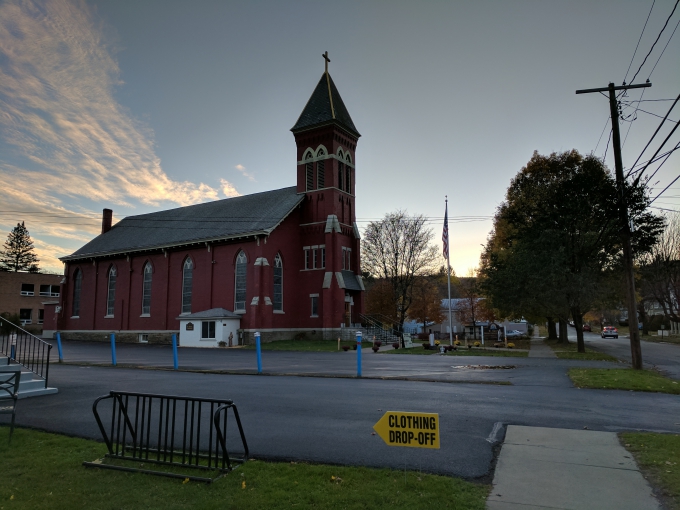 Let’s take a look at another example. The above image is maybe my favorite of the hundreds I took over the last few weeks with the Pixel. The dusk setting is ideal, and the camera does a great job taking advantage of it. The only area of this photo that loses significant detail is the very top of the church steeple, and even that is minor.
Let’s take a look at another example. The above image is maybe my favorite of the hundreds I took over the last few weeks with the Pixel. The dusk setting is ideal, and the camera does a great job taking advantage of it. The only area of this photo that loses significant detail is the very top of the church steeple, and even that is minor.
The rest of the church, the street, the sky all look phenomenal and well exposed. There’s good detail in the lowlights of the church and in the more exposed portions of the sky being hit by the setting sun. It’s a stunner.
 Finally, we have the trickiest area for any smartphone camera: poor lighting conditions. This is where you can really begin to differentiate between the very best and the very worst. I was, overall, really impressed with how the Pixel performed in low light conditions. It’s not a miracle worker, but it does well given the form factor’s limitations.
Finally, we have the trickiest area for any smartphone camera: poor lighting conditions. This is where you can really begin to differentiate between the very best and the very worst. I was, overall, really impressed with how the Pixel performed in low light conditions. It’s not a miracle worker, but it does well given the form factor’s limitations.
Let’s take a look at the sign photo above. The image was taken after the sun had set, with the only source of light being a streetlamp to the camera’s right, as well as a few ground lights that illuminate the church at night.
I was really impressed with this photo, in particular, because of the amount of detail retained on the sign. There is definite noise and softness elsewhere in the photo, in the sky, on the house to the right and the church to the left, but the sign remains quite sharp and impressive even after enhancing the image.
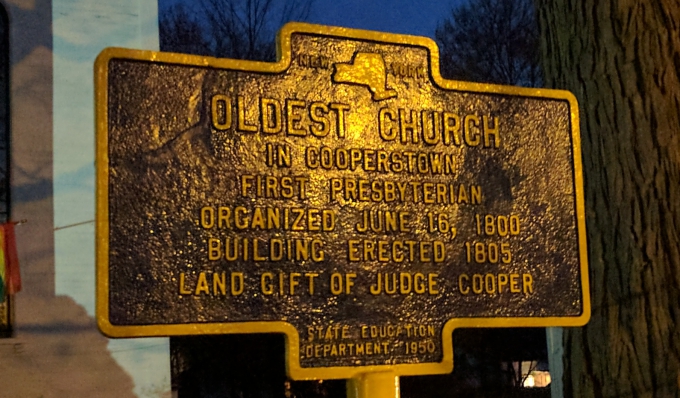 You can see in the cropped version that there is some degradation near the bottom of the sign, but the rest holds up well.
You can see in the cropped version that there is some degradation near the bottom of the sign, but the rest holds up well.
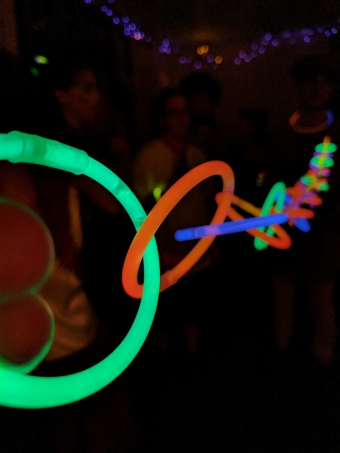 As I mentioned, the Pixel camera is a not a miracle worker. Take this picture of a string of glowlights for example. It’s a neat photo, and the camera does a good job picking up a fair amount of detail on the first ring, and the second to a lesser degree, but the lights are well exposed well everything is shrouded in darkness. This is a tough test for any camera, let alone a smartphone shooter. It’s nearly impossible with the hardware available to get an image like this one, taken in a dark room and focusing on a light source, to properly expose the entire scene. But you also don’t necessarily want the entire scene to be properly exposed. If this photo were, it would lessen the effect of the glowsticks.
As I mentioned, the Pixel camera is a not a miracle worker. Take this picture of a string of glowlights for example. It’s a neat photo, and the camera does a good job picking up a fair amount of detail on the first ring, and the second to a lesser degree, but the lights are well exposed well everything is shrouded in darkness. This is a tough test for any camera, let alone a smartphone shooter. It’s nearly impossible with the hardware available to get an image like this one, taken in a dark room and focusing on a light source, to properly expose the entire scene. But you also don’t necessarily want the entire scene to be properly exposed. If this photo were, it would lessen the effect of the glowsticks.
Here’s one more. The photo (below) was taken in the same room as the glowstick image, but obviously not focusing on a light source. You can tell the lack of light does have an effect on the sharpness of the image, there’s a significant amount of noise, and while the beer can still has a decent amount of detail, when you enhance the photo you can clearly see it is less detailed than the images taken with proper lighting.
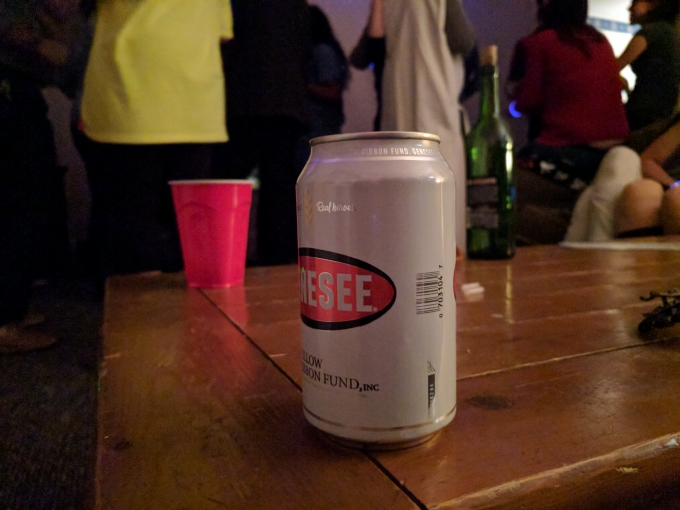 This is nothing new, however. Even the best smartphone cameras aren’t superheroes in low light conditions. If we bring Rogelio back in one more time, you’ll see the Note 7 delivers a similar kind of result in a similar situation.
This is nothing new, however. Even the best smartphone cameras aren’t superheroes in low light conditions. If we bring Rogelio back in one more time, you’ll see the Note 7 delivers a similar kind of result in a similar situation.
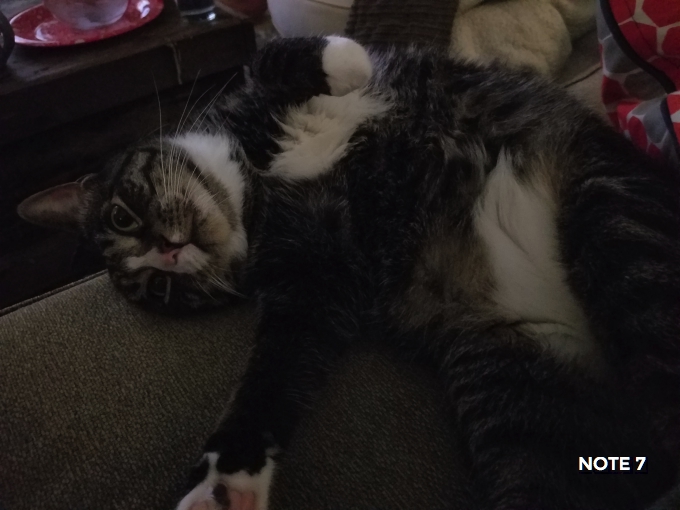 This photo was taken, like the beer can photo, in a room with little light (perhaps slightly less) and the level of detail is nowhere near as good as the cannon photo we looked at from the Note 7 earlier.
This photo was taken, like the beer can photo, in a room with little light (perhaps slightly less) and the level of detail is nowhere near as good as the cannon photo we looked at from the Note 7 earlier.
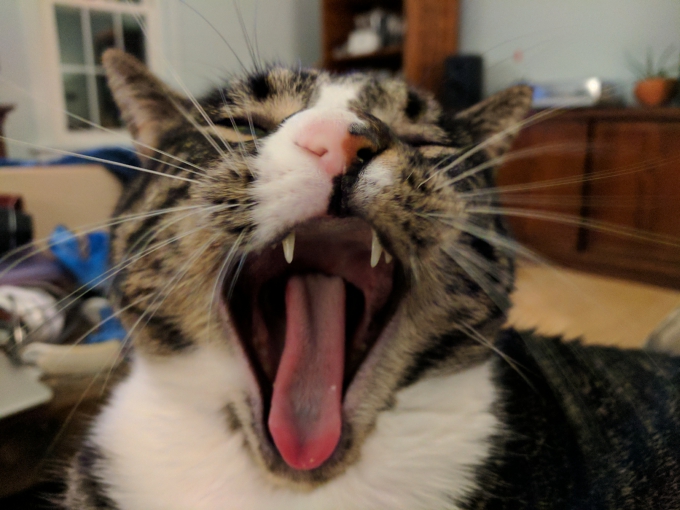 Ultimately, no matter which way you break it down, the result is the same. The Pixel camera is very, very good. Over the last few weeks, I have grown to love this setup and it has made me enjoy taking photos with my phone more than ever before. Not only is the image quality great, but the way the software performs is second to none when compared to the phone’s I’ve used this year. Even without extensive manual settings, I prefer using Google’s camera app over any other on the Pixel.
Ultimately, no matter which way you break it down, the result is the same. The Pixel camera is very, very good. Over the last few weeks, I have grown to love this setup and it has made me enjoy taking photos with my phone more than ever before. Not only is the image quality great, but the way the software performs is second to none when compared to the phone’s I’ve used this year. Even without extensive manual settings, I prefer using Google’s camera app over any other on the Pixel.
The fact that Google got the camera right on the first try, on top of all that the Pixel has going for it, is astounding. For years, the Nexus program was plagued by poor camera performance up until last year’s 6P. It would have only been prudent to be wary of how the Pixel would perform in the camera department. Well, fear no more.
It is really, really good.